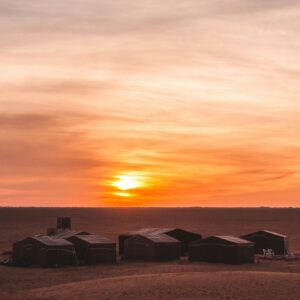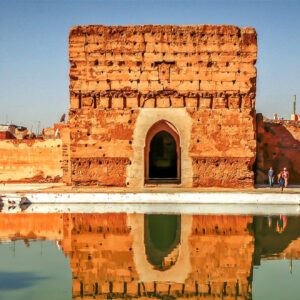The Ultimate Guide to Visiting the Sahara Desert: When and How to Make the Most of Your Adventure
The Sahara Desert—one of the most captivating landscapes on Earth—offers a unique and awe-inspiring experience for those who dare to explore its vast, shifting dunes. But when is the best time to visit the Sahara Desert? And what should you do to make your trip unforgettable? In this comprehensive guide, you’ll find everything you need to plan your desert adventure, from the ideal seasons to the must-do activities, packing tips, and more.
Understanding the Climate of the Sahara Desert
Before embarking on a Sahara Desert journey, it’s essential to understand the climate. Known for its extreme weather, the Sahara experiences both scorching heat in the summer and surprisingly chilly conditions in the winter. Here’s a quick look at the key weather characteristics:
- Summer (June to August): Daytime temperatures regularly exceed 40°C (104°F), making the heat intense and potentially dangerous for those unprepared. Nights, however, can be a bit cooler but still warm.
- Winter (December to February): Daytime temperatures average around 10°C (50°F), but nights can plummet to freezing levels—0°C (32°F) or below.
- Minimal Rainfall: The Sahara is one of the driest places on Earth, with very little rainfall throughout the year, which contributes to its stark beauty.
Knowing these extremes is crucial for selecting the best time to visit, as the season you choose will determine the overall comfort and enjoyment of your experience.
The Best Seasons to Visit the Sahara Desert
Spring (March to May)
If you’re looking for moderate temperatures and less intense heat, spring is one of the best times to visit the Sahara. Here’s why:
- Pros:
- The desert is pleasantly warm, with daytime temperatures comfortable for trekking and outdoor exploration.
- The desert blooms with wildflowers and cacti, offering a beautiful contrast to the arid sand dunes.
- It’s a less crowded time, meaning you can enjoy a more peaceful and intimate experience.
- Cons:
- There is a chance of encountering sandstorms, which can temporarily disrupt your plans but can also be a dramatic part of the desert experience.
Autumn (September to November)
Autumn offers another fantastic opportunity to visit the Sahara Desert. The weather is cooling off after the scorching summer heat, and the desert offers its own unique beauty.
- Pros:
- The temperatures are comfortable and perfect for long treks across the dunes or camel rides.
- You’ll witness vibrant sunsets, with the shifting colors of the desert providing an amazing backdrop for photography.
- It’s an excellent time for trekking, photography, and exploring oases.
- Cons:
- Early September can still feel quite warm, so it’s best to prepare for possible heatwaves if traveling early in the season.
Summer (June to August)
While summer in the Sahara might seem like an exciting adventure, it’s not for everyone.
- Why You Might Avoid Summer:
- Summer temperatures can soar well beyond 40°C (104°F), making it extremely challenging for anyone unaccustomed to such heat.
- Excessive heat can lead to dehydration, heat exhaustion, or even heatstroke if not properly managed.
However, if you’re an experienced desert traveler with the right gear and experience, summer can still offer a unique and isolated experience.
- What to Do in Summer:
- Only plan your trip if you’re well-prepared for the harsh conditions. Be sure to travel with a guide and ensure you have proper protection (hats, sunscreen, hydration).
Winter (December to February)
Winter offers the most comfortable conditions for exploring the Sahara Desert. While the days are pleasant, the nights can get quite cold, making this season an excellent time for adventure.
- Why Winter is Ideal:
- Daytime temperatures are moderate, making camel rides, desert trekking, and visits to desert oases comfortable.
- The cold nights provide a memorable camping experience, perfect for stargazing.
- Winter provides the clearest skies for stargazing, allowing you to witness the awe-inspiring beauty of the night sky.
- Cons:
- While the days are great, the nights can get very cold, so be sure to pack appropriately.
Must-Do Activities in the Sahara Desert
The Sahara Desert is a land of mystery and wonder, offering several unique activities that you can’t experience anywhere else in the world. Here’s what you shouldn’t miss:
Camel Trekking Across the Dunes
One of the most iconic Sahara activities is camel trekking. Riding through the desert on a camel allows you to experience the vastness and serenity of the dunes like the nomads who have traversed the Sahara for centuries.
- Best Time: Early morning or late evening, when the temperatures are more comfortable and the lighting is perfect for photos.
- What to Expect: You’ll ride through golden sands, with views of seemingly endless dunes stretching across the horizon. Your guide will lead you through remote desert landscapes and provide fascinating insights into the environment.
Camping Under the Stars
The Sahara Desert offers some of the clearest skies in the world, making it a paradise for stargazers. Camping under the stars is one of the most magical experiences the desert offers.
- Pro Tip: Plan your trip during a new moon phase to experience the darkest skies for stargazing.
You’ll sleep in traditional tents, perhaps with a campfire to keep you warm during the chilly nights. It’s a great way to connect with the desert’s unique charm.
Exploring Desert Oases
The Sahara is not all just sand. Hidden among the dunes are verdant oases, where you can experience a completely different side of desert life. These lush, green spots are where ancient civilizations thrived and continue to sustain desert communities today.
- What to Do: Visit oases like the Siwa Oasis in Egypt or the M’hamid Oasis in Morocco to explore date palm plantations, sample desert fruits, and learn about local desert agriculture.
Interacting with Local Berber Communities
The Berber people have lived in the Sahara for centuries, and spending time with them is a highlight of any desert journey. You’ll have the opportunity to learn about their culture, including their traditional crafts, cuisine, and hospitality.
- What to Expect: Take part in cultural activities, such as handicraft workshops, cooking classes, and traditional storytelling around the campfire.
What to Pack for Your Sahara Desert Visit
Packing for the Sahara Desert requires some planning, as conditions can change drastically between day and night. Here’s what you should bring for your desert adventure:
Essentials for Any Season
- Lightweight, breathable clothing to keep you cool during the day.
- Wide-brimmed hat to protect your head from the sun.
- Sunscreen with high SPF to shield your skin from harmful UV rays.
- Sturdy, closed-toe shoes for trekking across rocky and sandy terrain.
- Reusable water bottle to stay hydrated in the dry climate.
- Layers for chilly nights when temperatures can drop unexpectedly.
Additional Items for Specific Seasons
- Summer: Don’t forget cooling towels and electrolyte packets to help stay hydrated and cool.
- Winter: Pack thermal layers, as well as a sleeping bag to stay warm during the cold nights.
Sample Itinerary for a Sahara Desert Trip
3-Day Adventure Plan
Day 1: Arrival and Camel Trekking
- Arrive at Merzouga (a popular starting point in Morocco).
- Begin your camel trek, watch the sunset over the dunes, and settle in for an overnight stay in a desert camp.
Day 2: Exploring the Dunes and Oases
- Spend the day exploring nearby oases and interacting with local Berber communities.
- Enjoy a traditional meal prepared by your hosts in a desert village.
Day 3: Morning Hike and Departure
- Wake up early to experience the breathtaking sunrise over the dunes.
- Take a short hike for panoramic views before heading back to your starting point for departure.
Conclusion: Plan Your Sahara Desert Adventure Today
The Sahara Desert is an otherworldly destination that promises unforgettable experiences, whether you’re trekking across its iconic dunes, camping under the stars, or discovering its rich cultural heritage. By planning your trip around the optimal seasons—spring, autumn, or winter—you’ll ensure the most comfortable and enjoyable adventure possible. So, pack your bags, embrace the desert’s beauty, and get ready for the journey of a lifetime.
Ready to embark on your desert adventure?
Start planning your Sahara Desert trip today and make memories that will last forever!


